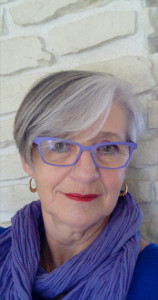
Discover the contemporary work of Cy PAVEL

Visual artist, graduate from the Ecole Nationale Supérieure des Beaux-Arts in Paris. Aggregate of Plastic Arts. Born in 1956 in Paris. He begins his journey in the context of Free Figuration, but then feels close to it. with Les Nouveaux Fauves de Berlin and exhibits neo-expressionist painting which, while remaining figural, moves away from narrative figuration. The first Couples (or Duos) establish a dialectical staging within the painting, where Masculine-feminine tensions, dialogue and confrontation, masks and figures, the reversibilities of desire are played out. At the same time, his teaching experience enriches him with decisive insights into contemporary plastic expression and new media, and he better understands the specificities of their work. s of the “painting medium”. Confronted in the Great Couplesà the proof of a figuration which constructs itself, self-destructs, covers itself, because always "too painted" à in his eyes, still too narrative, he opened, from 1993, the way to the Palimpsests which would be at the heart of the artist’s future approach. Long-term work on the « disappearance » of painting, the threat of its ruin, its memory; and where The phenomenological character of the pictorial fabric is manifested, its fragility, as well as its paradoxical durability. Carried by an even more radical process, this problem will then be replayed in the Serie des Brûlées; ce are remnants of hand-painted canvases; resinous oil and preserved under glass, as if preserved for a time from the erosion from which they are already present. carriers. They revoke the status of images and become a kind of “skins” pictorial and pathetic, but which never cease to represent us again. In 2009, a major retrospective took place. Les Esselières Conference Space in Paris Villejuif demonstrated this approach. It was a decisive experience to question the nature of painting, the painting object and their relationship to the figured body. To this day, the Palimpsests continue the open path and are revealed to the public as a counterpoint to the different series (Duets, Solos, Curiosities, Survivances, Invisibles... ). Building on this experience, the artist claims a figuration nourished by « disasters » that she went through – as out of time– even archaic, ever more anchored in the physical substrate of painting and which attests, ultimately, to an always possible return to the painting. The figuration becomes one with the material and structures the pictorial sheet, where the haptic dimension is inseparable from the image and the sign.
SERIES/1 PALIMPSESTES: This inaugural series foreshadows the expected disappearance of painting, although paradoxically affirming its permanence, its resistance. A literal journey back through time takes place here, in search of the lost image, traces of its genesis and its erasure. It is a work of anamnesis which is played out concretely in the confrontation with reality. the fallen image. The painting reveals its underside with difficulty, layer after layer, and finally the vestiges of the buried image emerge, victim of the ravages of time... A battle fought against each other. to the "painting wall" to tear away fragments of representation, ghostly remains, which seem to resurface from the background, covered, erased, repainted; so many lost images, taken in the film of painting. These "palimpsests" resurface in the pictorial fabric, color becomes phenomenological. Severe; Auras of mythical, legendary or mythological images emerge, forgotten tragedies, ancient representations obscurely present. A "formerly" registered in the subject...
LES BRÛLÉES: The radical gesture to say the least to which the "Brûlées" attests to the planned disappearance of the painting. Delivered to the fire, the canvas is only the residue of its begun combustion... Are these paintings or images as we understand it? Not really anymore, rather "skins of paint", tactile shreds torn from the flow of time, removed from the fire, fragile witnesses to the image and the painting. Shreds of painting, relics or indexical figures preserved under glass, as if preserved for a time from the final erosion of which they are already present. carriers. By this ultimate resistance to entropy, these remains of skins, of painted canvases with their holes, their gaps, never cease to appear to us again...
CURIOSITIES: pictorial and graphic areas from where heterogeneous and anachronistic fragments of art images and paintings torn from time, brought back to life, resurface. up to date, put together for an unexpected destination as much as new. Torn, superimposed, intertwined, these collages and take-offs play with eclecticism, the hybrid, the chimera, the heteroclite, even the the ruin, to appear paradoxically, here again and always in the present.
This does not mean that the artist abandons his always reaffirmed figurative vein, rich in material and singular.
In the DUOS & SOLOS: Cy Pavel can finally begin a loop that leads to a "rediscovered figuration" and assumed, nourished by “catastrophes” that she went through – as out of time – even archaic, ever more anchored in the physical substrate of painting and which attests, ultimately, to an always possible return to the painting. In recent paintings, the figuration becomes one with the material and structures the pictorial sheet, where the haptic dimension is inseparable from the image and the sign.






































































